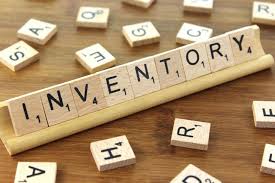
In simple terms, Inventory management is the process of ordering, handling, storing, and making use of a company’s non capitalized assets. Inventory can vary from business to business. For some businesses like manufacturing organizations, this involves raw materials and components, while others may only deal with finished stock items ready for sale. When done effectively, businesses reduce the costs of carrying excess inventory and funds being tied in excess stock, or avoid products being out of stock while maximizing sales.
You can also ensure your products are sold in time to avoid spoilage or obsolescence, or spending too much money on stock that’s taking up space in a warehouse or stockroom. Having high levels of inventory adds to expenses and increases overhead costs. An effective way to manage inventory is to determine the inventory demands of the business.
Below are 7 tips you can effectively manage your inventory.
1. Check your inventory on a daily basis:
If you want to effectively manage your inventory, then you must find a way check received goods, goods issued out or sold, and the goods in stock on a daily basis. There are softwares and ERPs that can help you keep track of such. Pending when you install the software, you must check this manually because managing your inventory is not negotiable unless you want your business to fail.
2. Prioritize your inventory:
For a business that has more than one product line or SKU, you must learn how to prioritize your inventory. Firstly, categorize them based on demands. Categorizing your inventory into priority groups can help you understand which items you need to order more of and more frequently, and which are important to your business but may cost more and move more slowly. For instance, you may have products A,B and C, and A sells faster than B and C. It’s imperative that you establish a reorder level for all of them with having more reorder quantities than the others because it sells faster. Limit seasonal inventory and cut back on inventory that does not sell.
3. Forecast accurately:
Forecasting is indispensable if you must be able to manage your inventory effectively. Forecasting means that you will project the quantity of products you will sell or use within a targeted time. Once you are able to make this projection based on historical data and current demands, all your purchases will be made around it. This means that you will not purchase anything you didn’t forecast for unless your demands suddenly exceeded your projections but even at that, tread carefully.
4. Purchase only Minimum Order Quantities(MOQ) for products not selling fast.
Minimum Order Quantity(MOQ) is the minimum quantity of product a supplier or manufacturer is willing to sell to a buyer. One way to manage your inventory is to buy only MOQ for products that you do not have ready buyers to avoid tying down money. You can always more once sales improve. Minimum order quantities are often negotiable. Don’t be afraid to ask for a lower minimum so you don’t have to carry as much inventory.
5. Adopt the First In, First Out (FIFO) approach:
First In, First Out approach is a technique whereby you use or push out items based on when they came; it literally means that you’ll have to sell or use the items that came in first before touching the items the items that came in later. This technique preserves the freshness and newness of your inventory. It is advisable that goods be sold in the same chronological order as they were purchased or created, especially important for perishable products like food, flowers, and makeup. It can also apply for nonperishable goods since items sitting around for too long might become damaged, or otherwise out of date and unsellable. The best way to apply FIFO in a storeroom or warehouse is to add new items from the back so the older products are at the front
6. Label appropriately:
Make sure to keep records of the product information for items in your inventory. This information should include SKUs, barcode data, suppliers, countries of origin and lot numbers. If it falls on you, you might also consider tracking the cost of each item over time so you’re aware of factors that may change the cost, like scarcity and seasonality. Labeling also helps; it can help you grasp information on the racks or shelves at a glance. It can also help a visitor ascertain some critical information about the stock without needing much assistance.
7. Learn to manage your suppliers well in case of possible returns:
Having a good relationship with your product suppliers goes a long way. Whether you need to return a slow-selling item to make room for a new product, restock a fast seller very quickly, troubleshoot manufacturing issues, or temporarily expand your storage space, it’s important to have a strong relationship with your suppliers. That way they’ll be more willing to work with you to solve problems. In particular. Be clear, proactive and a bit friendly with your communication. Always communicate with them both during high sales period and also when sales seem to be low, they might be able to help.
If you need more free and customized advise with managing your inventory, write to us via info@edasglobalsupplychain.com.


